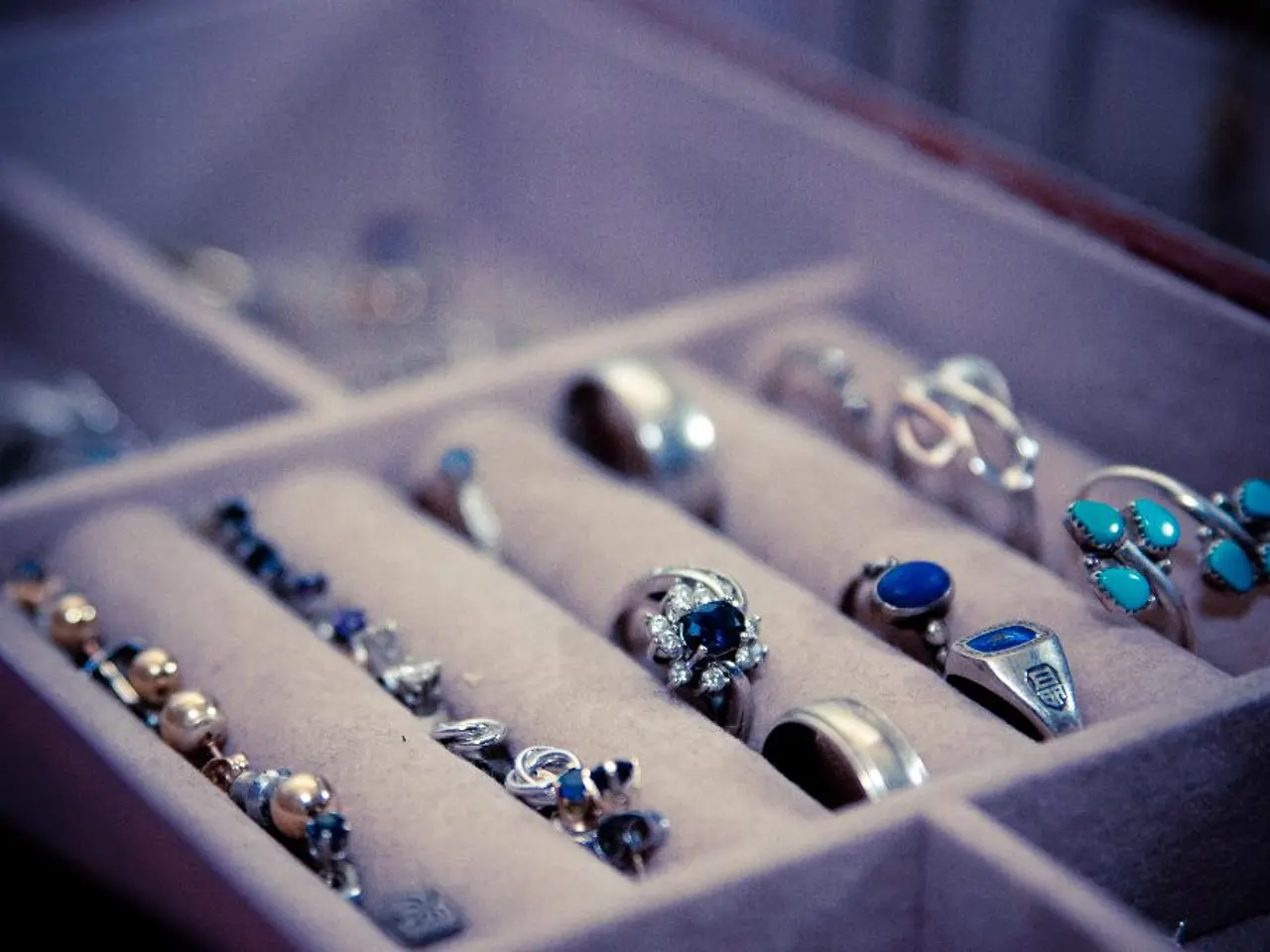U.S. tariff evasion strategies sought by Indian jewelry producers and merchants
In the dynamic world of international trade, the Gulf states are making a significant mark as a new hub for Indian jewelry exports. This shift is primarily driven by rising US tariffs on Indian imports and geopolitical trade tensions.
The United States has been imposing tariffs on its international trading partners, causing global companies to seek new ways to avoid trade barriers. In response, Gulf countries, such as the UAE, are becoming a new haven for Indian jewelry manufacturing and export. Indian companies, like Titan, are shifting production and building partnerships in the Gulf to bypass the high tariffs imposed by the US on direct Indian exports.
The Gulf offers a business-friendly environment and strategic advantages that help Indian firms maintain competitive edges, diversify risk exposure, and secure access to the lucrative US luxury goods market despite ongoing trade barriers. The lower tariffs (around 10%) on exports to the US compared to India's current 25-50% tariff rate make the Gulf an attractive destination for Indian companies.
The anticipated growth in the Saudi jewelry market is a promising opportunity for Indian companies. Although specific market growth figures for Saudi Arabia were not found, the Gulf region overall is expected to see significant growth and expansion in jewelry manufacturing and exports, contributing to the reshaping of the global jewelry supply chain.
Indian jewelry companies are also moving toward integrated value chains within international hubs like the Gulf, rather than relying solely on exporting from India. This trend is strengthened by agreements such as the UAE-India CEPA (Comprehensive Economic Partnership Agreement), which facilitates closer collaboration and cost optimization across the regions.
In a bid to further strengthen the partnership between India and Saudi Arabia in jewelry trade, the Gem and Jewellery Export Promotion Council (GJEPC) is organizing an exhibition in Jeddah in 2025. Indian jewelry exports to Saudi Arabia and Kuwait have already shown a significant increase, with Indian gold jewelry exports to Saudi Arabia increasing by 26.05 percent and exports to Kuwait increasing by approximately 88 percent in the second quarter of 2024.
The value of the Saudi jewelry market is expected to double from $4.6 billion in 2024 to $8.3 billion by 2030. The GJEPC is actively seeking to expand India's jewelry exports to the Middle East, making it a promising market for Indian companies.
In conclusion, the Gulf states are emerging as a new hub for Indian jewelry manufacturing and export, driven by lower US tariffs, business-friendly policies, strategic location, and increasing collaboration between Indian and Gulf firms. The anticipated growth in the Saudi jewelry market presents a significant opportunity for Indian companies to expand their global footprint and tap into the lucrative US luxury goods market.
- With the increasing US tariffs on Indian imports and geopolitical trade tensions, global companies in the industry, such as Indian jewelry manufacturers, are seeking new ways to bypass the barriers, with the finance sector pointing towards the Gulf countries, like the UAE, as a new haven for manufacturing and export.
- The Gulf region, due to its business-friendly environment and lower tariffs (around 10%) on exports to the US compared to India's current 25-50% tariff rate, is attractive to Indian businesses in policy-and-legislation, as they can maintain competitive edges, diversify risk exposure, and secure access to the lucrative US luxury goods market.
- To further reinforce the collaboration between India and Gulf countries in the business of jewelry, specific events are being organized, such as the Gem and Jewellery Export Promotion Council (GJEPC) exhibition in Jeddah in 2025. These initiatives demonstrate the growing interest and hope of Indian companies in the politics and general-news of expanding their global footprint in this sector.




